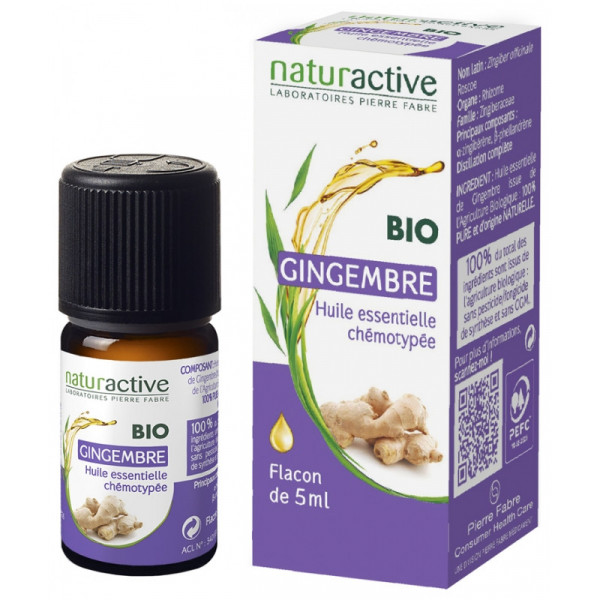Indications of ginger essential oil
Helps during physical and psychological periods of tiredness, relieves joint and sensitive muscle pain and treats digestive functional problems.
Botany information
Zinziber officinalis Botanical family: Zingiberaceae Producing organ: rootstock Chemotype: alpha-zingiberene, beta-phellandrene Origin: Sri Lanka or Madagascar
Botany specifications
Cultivated in China for 5000 years, Ginger is no longer wild and no longer reproduces itself spontaneously. The plant is multiplied by the division of the rootstock. This hot spice is one of the first to arrive in Western countries.
Use
Diffusion +++, Bath +++, Massage +++, Orally +++
Ambient setting: on its own or in a mixture by regular low heat evaporation.
Atmospheric diffusion: in a mixture from a diffuser by spraying. Limited use.
Dermal application: diluting, 5-30% in vegetable oil.
Orally: diluted with some vegetable oil - only after medical agreement. 1 drop per day.
Inhalation: not recommended
Practical advice
Important to know : Very powerful, the ginger essential oil can be used for the skin after diluting it in the appropriate vegetable oil. It is best used for inflammatory pains after medical consent.
Tonus : Diffusing the ginger essential oil is only recommended for its invigorating effect and must always be mixed with another oil. Put 8 drops of ginger EO for every 12 drops of lemon EO and leave to diffuse for 5-10 minutes every 2 hours in the room you are in.
Nausea : 1-2 drops of ginger essential oil on jugular vein.
Massages : When applying onto the skin, the ginger essential oil can be used if different ways according to your needs: - diluted to 10% with macadamia vegetable oil, massage onto the abdomen to stimulate digestion. - diluted to 15-20% with calophyll vegetable oil, massage onto the painful joints and muscles (stiff neck, aches...) - dilute to 5% in sweet almond vegetable oil before playing sport.
Contraindication
Not recommended for children younger than 7 years old, and pregnant or breast feeding women.




